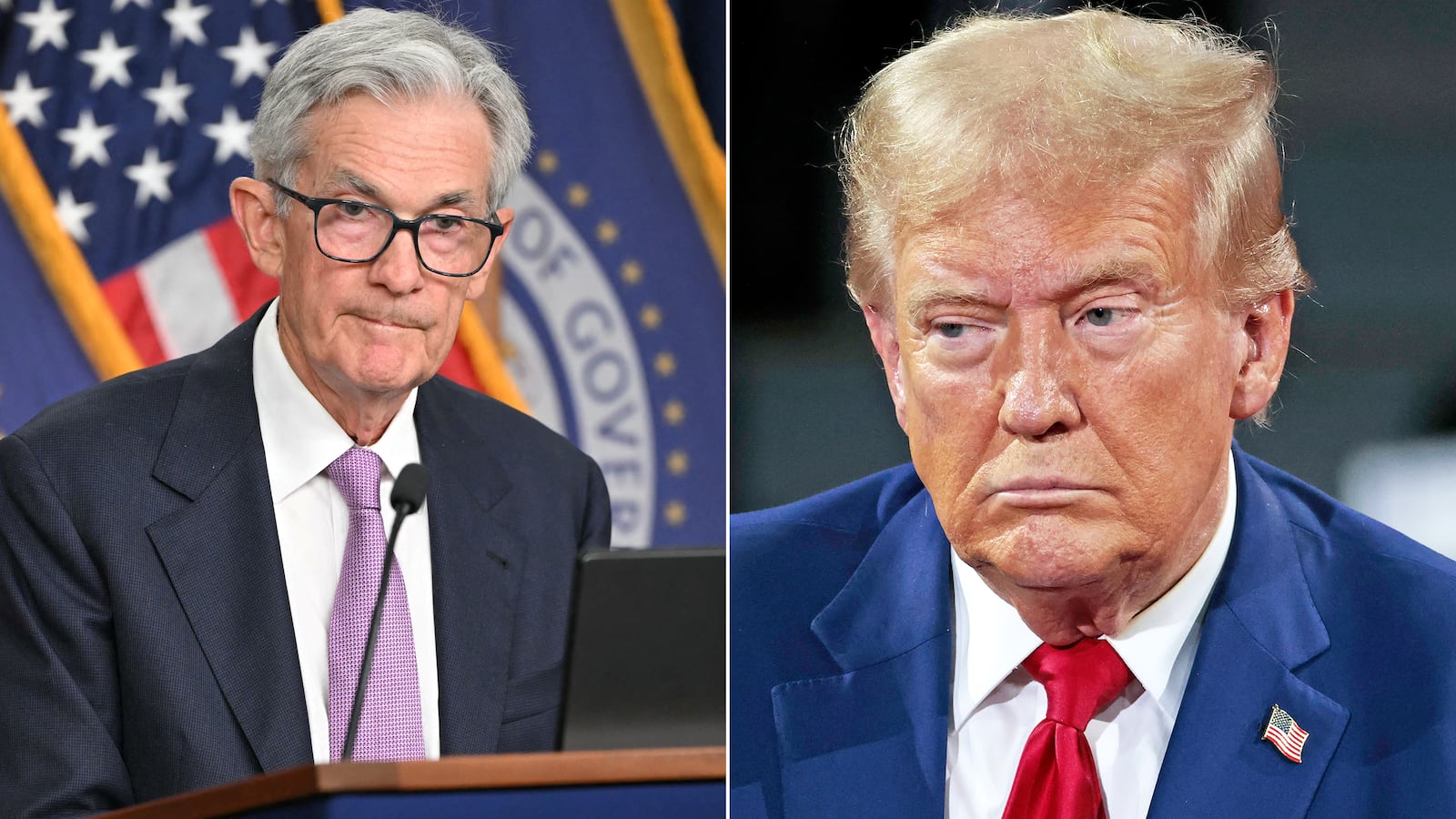The Federal Reserve cut its key interest rate by 0.5 percent, or 50 basis points, on Tuesday, thrusting it into the center of a political firestorm.
Donald Trump quickly weighed in to suggest that the panel could be “playing politics” with its decision, given its proximity to November’s presidential election.
Asked for his reaction at a New York City campaign stop, the former president said, “I guess it shows the economy is very bad to cut it by that much—assuming they’re not just playing politics. The economy would be very bad or they’re playing politics, one or the other.”
Earlier in the day, the Fed cut its key borrowing rate from 5.25 to 5.50 percent—setting banks’ short-term borrowing rates between 4.75 and 5 percent. Markets rose immediately on the cut, the biggest since crisis measures taken in 2008 as the economy collapsed into the Great Recession.
“The Committee has gained greater confidence that inflation is moving sustainably toward 2 percent, and judges that the risks to achieving its employment and inflation goals are roughly in balance,” the Fed said in a statement.
The cut is also the most politically-charged action taken in recent history by the interest-rate setting body—because former president Donald Trump had repeatedly demanded that it keep interest rates stable ahead of the November election.
Trump and his aides believe a cut in the cost of borrowing would benefit Vice President Kamala Harris’ campaign by convincing people that the economy is strong and by reducing concerns over inflation.

The Dow closed lower Wednesday after the Federal Reserve lowered interest rates by half a percentage point, ending the day at 41,503.10.
Google Tracker/ScreenshotRepublican House Speaker Mike Johnson also hailed the move in mild terms, calling it “welcome news for consumers,” but challenged its slightly “suspect” timing.
“Right on the eve of an election? I don’t know. Count me as curious about it,” he remarked, according to CNN.
Both President Joe Biden and Vice President Kamala Harris were more effusive in their praise, with Biden calling it an “important moment” and adding that he would address the matter in more detail in a Thursday speech.
Harris, for her part, said in a statement that though the rate cut was “welcome news for Americans who have borne the brunt of high prices,” her focus remained on “the work ahead to keep bringing prices down.”
Wall Street’s reaction to the aggressive but widely-expected move was relatively subdued. In its immediate aftermath, the Dow Jones Industrial Average climbed more than 350 points, touching the record it set Monday before receding to close at 41,503.10, having slid just over 103 points, or 0.2 percent.
The S&P 500 and the Nasdaq also experienced initial surges, with the former eventually dropping 0.29 percent to close at 5,618.26 and the latter 0.31 percent to 17,573.30.
While the rate cut will not immediately bring down most people’s mortgages, and would reduce monthly payments on some 401ks, cheaper interest rate also reduce inflationary pressures on the everyday cost of living, such as credit card bills. Lower mortgage rates would also cut the cost of home-buying and could free up a scelerotic housing market.
Economists also believe that if the Fed had not acted, high interest rates would have increased the chances of a recession.
At a campaign stop in Raleigh, North Carolina on Wednesday, Republican vice presidential nominee JD Vance was asked by a reporter for his reaction to the rate cut. The journalist, who added that the cut would “alleviate inflation for a lot of people,” was immediately booed by the crowd.
“My reaction is: Half a point is nothing compared with what American families have been dealing with for the last three years,” Vance said, smirking.
Under chairman Jerome Powell, a Trump appointee who the former president has since publicly repudiated, the Fed voted for the cut after months of falling inflation reports and a slow-down in jobs growth. It is the central bank’s first rate cut since early 2020.
One official, Federal Reserve Governor Michelle Bowman, opposed the decision, with the Fed saying she would have preferred a quarter-point cut, according to The Wall Street Journal.
A Trump appointee tapped for the board in 2018, Bowman is the first governor to publicly disagree with an interest-rate move since 2005, when then-governor Mark Olson dissented with a rate increase in the wake of Hurricane Katrina.
The last time a rate cut came so close to an election was in September 1992, when the economy was still emerging from recession. It did not ultimately save then-president George H.W. Bush from electoral defeat at the hands of Bill Clinton, who had campaigned on “It’s the economy, stupid.”
But this time the move is certain to lead to major political tensions, with Trump already signaling that he would like powers over the independent Federal Reserve if he wins in November. In July, Trump had told Bloomberg he would not fire Powell but added, “especially if I thought he was doing the right thing.”








